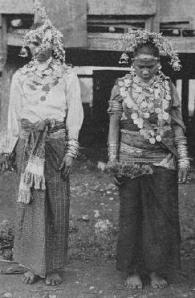Oleh: Alfazri*
Ada yang terasa janggal dalam kehidupan masyarakat Gayo, bila mereka tidak mengerti siapa diri mereka sebenarnya. Siapa dan bagaimana perjuangan kerajaan Linge, sebuah kerajaan berada di dalam lingkaran hutan yang melahirkan kerajaan terkemuka di Aceh, dengan Aceh Darussalamnya.
Tanpa Linge tidak akan ada kerajaan Aceh Darussalam. Tetapi sayang, sebagian dari rakyat Gayo kurang memaknai bagaimana pendahulunya membangun kebersamaan dalam meraih sebuah karya yang gemilang.
Kiranya tidak salah, kita menggulang kaji bagaimana Linge yang telah mengukir sejarah melahirkan gerenasi tangguh. Lenge, begitu asal kata Linge. Dalam bahasa Gayo, Linge berarti “suaranya”.
Jauh sebelum kerajaan Aceh Darussalam berdiri, Linge adalah sebuah kerajaan yang terpisah dan berdiri sendiri. Kerajaan Linge di bawah pimpinan Adi Genali, mampu mengibarkan sayabnya dengan mengirimkan anak kandungnya, Merah Johan untuk menaklukan kerahaan Indraparta di Banda Aceh.
Kiprah dan perjuangan Merah Johan yang bergerak dari Pase, mampu menundukkan kerajaan hindu Indraparta di Lamuri, Aceh. Kemudian Merah Johan mendirikan Kerajaan Aceh Darussalam dan langsung Merah Johan menjadi raja yang pertama.
Setelah Aceh dapat ditaklukkan oleh Belanda secara dejure, Linge berubah menjadi merupakan salah satu Kejurun di Wilayah Gayo. Kejurun adalah sebuah kerajaan yang mendapat legalitas dari kesultanan Aceh pada masa itu.
Dimata masyarakat Gayo khususnya, Linge merupakan negeri Asal orang Gayo dan negeri para raja. Keasalan Linge terungkap dalam pepatah Gayo yang tak asing lagi di telinga rakyat Gayo “Asal Linge Awal Serule.”
Linge secara wilayah dikenal dengan sebutan Gayo Deret . Setelah masa kemerdekaan, seiring dengan perputaran waktu, Linge berubah menjadi nama sebuah kampung dan juga salah satu nama kecamatan di kabupaten Aceh Tengah, dengan ibukota Isaq.
Gemerlap Linge, tidak lagi seindah pada masa jayanya kerajaan ini. Sebuah kerajaan yang telah melahirkan raja terkemuka Aceh. Kini Kampung Linge, bagaikan ibu yang merindukan anaknya untuk kembali. Linge dibalut hutan belantara dan menjadi kawasan marginal di Gayo.
Kampung Linge memiliki tiga dusun, Kawe Tepat, Pengkudu dan Buntul dengan penduduk sekitar 100 KK (Kepala Keluarga). Mata Pencarian utama masyarakat Linge adalah bertani. Salah satu tanaman khas disana adalah kemili (dalam bahasa Indonesia disebut kemiri) sebagai sumber mata pencarian selain bersawah.
Selain pertanian, masyarakat Linge juga dikenal sebagai peternak hewan, khususnya kerbau. Menurut beberapa sumber yang sempat penulis temui, mengaku, bahwa sebagian ternak itu ada juga milik orang-orang kaya di Takengon dengan sistem bagi hasil.
Wajar bila masyarakat Linge masih miskin, karena mereka mayoitas sebagai peternak kerbau, dan sang pemilik yang berada di Kota Takengen, hanya sesekali datang mengambil bagian dari saham yang ditanamkannya di Bumi Linge.
Segi bahasa, masyoritas masyarakat Linge, dialek bahasanya, lebih kental dengan dialek Gayo Deret/Linge. Perbedaan dialek ini tidak menyebabkan masyarakat Gayo sulit dalam berkomunikasi. Perbedaan dialek antara Gayo Deret/ Linge dengan dialek Lut (wilayah Kabupaten Bener Meriah dan sebagian Aceh Tengah), Belang/Lues (Wilayah Kabupaten Gayo Lues) serta Lukup/Lokop Aceh Timur dan Kalul Aceh Tamiang, hanya lima persen saja.
Mayoritas Bahasa Gayo itu seragam dan menunjukkan identitas kedaerah masing-masing. Perbedaan bahasa dari lima wilayah Gayo ini , tanpa disadari telah menambah kasanah dan kekayaan kata dalam bahasa Gayo itu sendiri.
Memiliki tofografi berbukit (delapan puluh persen wilayahnya ditumbuhi pinus merkusi), Linge menjadi wilayah yang special dan unik. Karena, walau daerah berbukit, namun kondisi di Linge tidaklah sedingin daerah Gayo (Takengon dan Bener Meriah).
Keunikan lainnya, banyak tanaman yang tidak dapat hidup di Dataran Tinggi Gayo, justru disini banyak ditemui tanaman-tanaman yang umumnya hidup di daerah pesisir. Salah satunya adalah pohon kelapa. Di Linge, jenis tanaman ini dapat tumbuh dengan baik dan berbuah, karena daerah ini memiliki dataran rendah dan berhawa panas seperti layaknya kawasan aceh pesisir pada umumnya.
Kondisi ini memang tidak dapat disalahkan. Karena, dari 8000 jiwa penduduk Kecamatan Linge (Data 2010), tingkat pendidikan masyarakat disana masih sangat rendah. Bukan hanya itu, kondisi alam yang tidak terlalu subur. Sehingga membuat sebagian besar masyarakat Linge masih berada dalam garis kemiskinan.
Hal ini semakin diperparah dengan berbagai masalah umum lainnya, seperti minimnya sarana dan prasarana yang harusnya diperoleh oleh masyarakat disana. Semuanya berbanding lurus dengan kondisi jalan yang belum beraspal, akses daerah yang sulit ditempuh, jarak yang jauh dari ibukota Takengon, termasuk kurangnya perhatian Pemerintah Aceh Tengah, membuat semuanya menjadi “babak belur”. Kehidupan di Linge adalah kehidupan kaum marjinal yang seharusnya tidak perlu terjadi, andaikata pemerintah lebih peduli.
Meski orang Gayo pada umumnya percaya Linge sebagai negeri asal orang Gayo berdasarkan Kekeberen (tradisi lisan), namun Negeri Linge masih menyimpan segudang misteri dan pertanyaan. Mengapa daerah Linge begitu terbelakang dalam segala bidang. Jika memang benar Linge sebuah sejarah panjang Gayo, mengapa saat ini mereka seperti “kelompok” marjinal yang tak layak diperhatikan?
Linge seperti dianaktirikan di negeri sendiri. Tidak salah bila Linge merindukan anaknya yang hilang yang telah melahirkan kerajaan terkemuka di Aceh, sebuah kerajaan yang megah di Asia Tenggara, Kerajaan Aceh Darussalam.
Tanpa terasa, penulis sempat menitikan air mata, ketika melihat Umah Pitu Ruang di Linge, yang sepi ditemani nyanyian alam. Subhanallah, Linge namamu yang megah, kini menjadi hiasan sejarah. Persatuan dan kesatuan yang sudah dibangun oleh pendahulu di kerajaan ini, khususnya buat Gayo, kini mulai tercerai berai, semuanya berebut kepentingan.
Asal Linge, awal Serule masih tergiang di indra penulis. Inilah Gayo, sebuah negeri yang terlupakan dan dilupakan. Sebuah kerajaan yang dibangun dengan taruhan nyawa, kini sepi diantara desauan pinus.
Perlahan penulis meletakaan tapak tangan di bumi Linge ini, sebuah kata lirih terucap” muyang datuku, maafen kami. Doanen kami, nume kami lupenen negeri Linge. Ledi silep kami. (Moyang leluhurku, maafkan kami. Doakan kami, bukan kami lupakan negeri Linge. Banyak sekali salah kami.)
Linge yang telah menyatukan urang Gayo dalam mendirikan kerajaan Aceh Darussalam, kini tinggal pusara-pusara pejuang di dalam semak belukar.
*Peminat Sejarah dan Budaya Gayo
Tulisan ini pernah dimuat di situs online lintasgayo.com on Thursday, 10 October 2013
Sumber: http://www.lintasgayo.com/42402/linge-bersatulah-gayo.html




